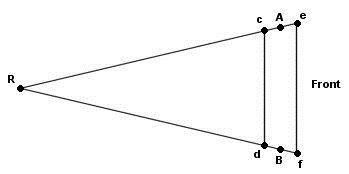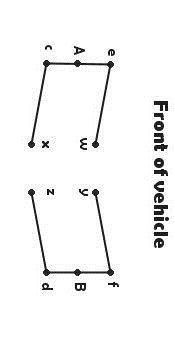
What is steering Ackermann?

e10pvmt
+1y
thanks max..i will take your advice to heart...i do plan on making a model to see how i can get ti to work most effciently for my application...again i appreciate you takin the time to look into some things for me
G
granth
+1y
you sayin only the balljoints are show, but you say in the first page the lowers are, nothing about the tops? I'm confused as hell now, cuz I thought the point before and after the center point on either side of the first picture, were the steering points on the spindle? and the balljoint in the middle and you run a line through them to the center line of the rear or whatever?

BioMax
+1y
The points in front of and behind the balljoint are the steering points, but not your actual steering points. That is what I am trying to explain here. That diagram is only good for straight axle front ends in which the tierods run from knuckle to knuckle. As soon as you have an a-arm front suspension in which the left and right tierods are seperated the geometry becomes complicated. Once you "get it" it's not so bad.
The difference between the points being considered lower balljoints or steering axis is not going to give a different final measurement (not within a tenth of a degree or so.) You are correct in considering the steering axis in your final design, but if you can't see how to bring all of this together, you obviously don't get it. As I have said before, not everybody is a designer. There are seperate fabricators, engineers and designers for a reason. I mean no disrespect by this, but I haven't met anybody yet that fully understands what I am trying to explain, you need to have a really firm grasp of goemetry and if you had a hard time with math in highschool, this is going to be even harder to understand. All I can suggest from here is to start looking at how the manufacturers have addressed ackermann and see if it starts making any sense.
The difference between the points being considered lower balljoints or steering axis is not going to give a different final measurement (not within a tenth of a degree or so.) You are correct in considering the steering axis in your final design, but if you can't see how to bring all of this together, you obviously don't get it. As I have said before, not everybody is a designer. There are seperate fabricators, engineers and designers for a reason. I mean no disrespect by this, but I haven't met anybody yet that fully understands what I am trying to explain, you need to have a really firm grasp of goemetry and if you had a hard time with math in highschool, this is going to be even harder to understand. All I can suggest from here is to start looking at how the manufacturers have addressed ackermann and see if it starts making any sense.
G
granth
+1y
no offense taken, i just don't see where you are saying to figure the angle into the second picture. I understand GETTING the angle, but USING IT is where im lost, and probably because I don't have someone "showing me" but rather only telling me.

BioMax
+1y
Edited: 8/19/2007 7:03:37 PM by BioMax
Edited: 8/19/2007 7:02:27 PM by BioMax
I rotated the second diagram in hopes to make a little more sense out of it. First you use the top diagram to find your needed angle then you use the second diagram to find your proper inner tierod placement (front to rear, not length.) You said it was a rear steer, so the first thing that you would do (after you find your needed angle in the top diagram) would be to draw your actual knuckle points. This where your steering axis is a concern. You would need to find the point in the steering axis at the height of your tierod pivot point. That would be point "A" and the tierod pivot point would be point "c" then you would use the angle created by points A, c and d in the first diagram and use it in the second diagram as angle Acx. "x" will be your front to back placement of your inner tierods.
Does that make any more sense?
Edited: 8/19/2007 7:02:27 PM by BioMax
I rotated the second diagram in hopes to make a little more sense out of it. First you use the top diagram to find your needed angle then you use the second diagram to find your proper inner tierod placement (front to rear, not length.) You said it was a rear steer, so the first thing that you would do (after you find your needed angle in the top diagram) would be to draw your actual knuckle points. This where your steering axis is a concern. You would need to find the point in the steering axis at the height of your tierod pivot point. That would be point "A" and the tierod pivot point would be point "c" then you would use the angle created by points A, c and d in the first diagram and use it in the second diagram as angle Acx. "x" will be your front to back placement of your inner tierods.
Does that make any more sense?



dropd80s
+1y
You mentioned you only wanted to bring up this geometry due to others desinging their own IFS with an impossibility to even come close to correct ackerman angles. So my question would be as a starting point, would it be best to set all these points as close to "theoreticly perfect" as possible? Or just to keep it out of anti-ackerman?

dropd80s
+1y
Oh and also, have you noticed the positioning of the inner tie rods, on OEM applications, to be different on different chassis? Like a regular cab short bed vs. a quad cab long bed, for instance? I assume that the angles would not change enough to truely affect the steering in a signifigant way...

BioMax
+1y
That's where it gets complicated. There are several different theories. In some cases that having too much ackermann is a benefit, in others haveing zero works best. On the street, I would make sure that it fell somewhere between no ackermann and theoreticaly perfect.
Related Discussions in Air Ride Suspensions
Thread
Posts
Last Post

